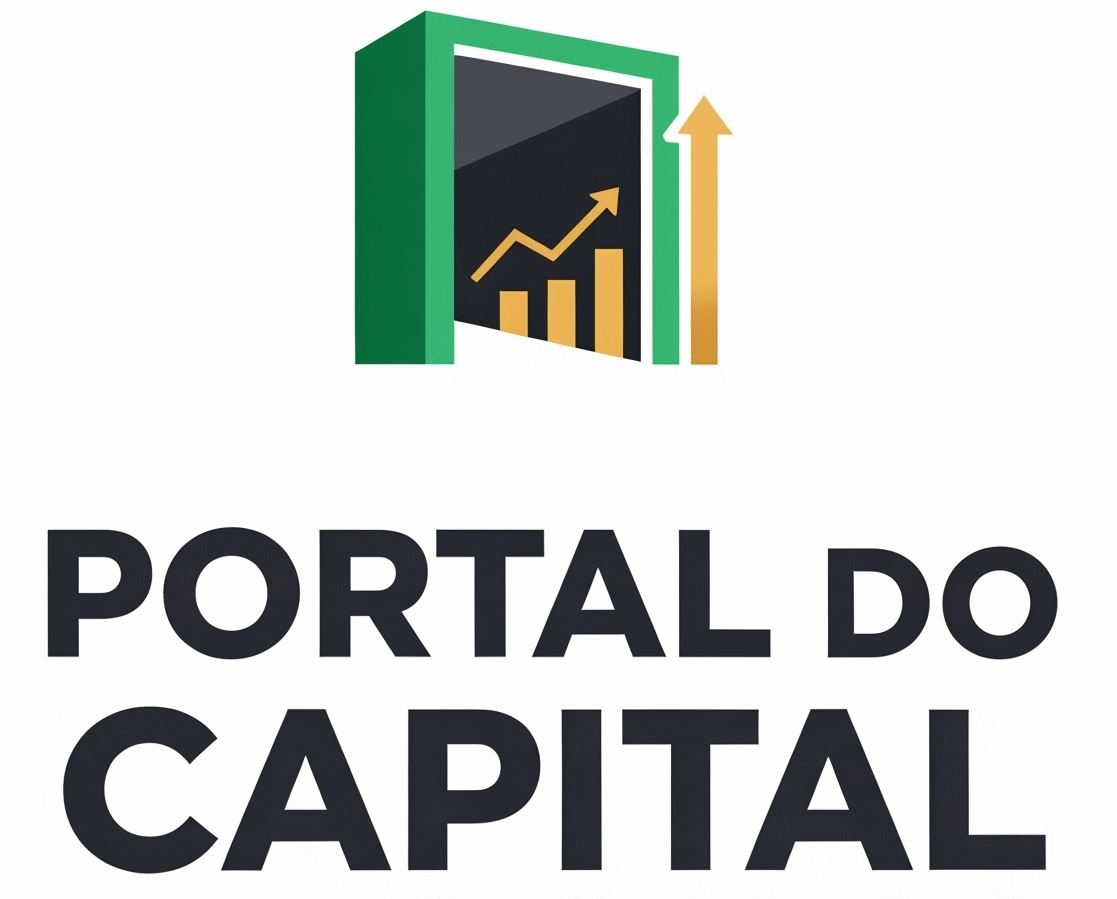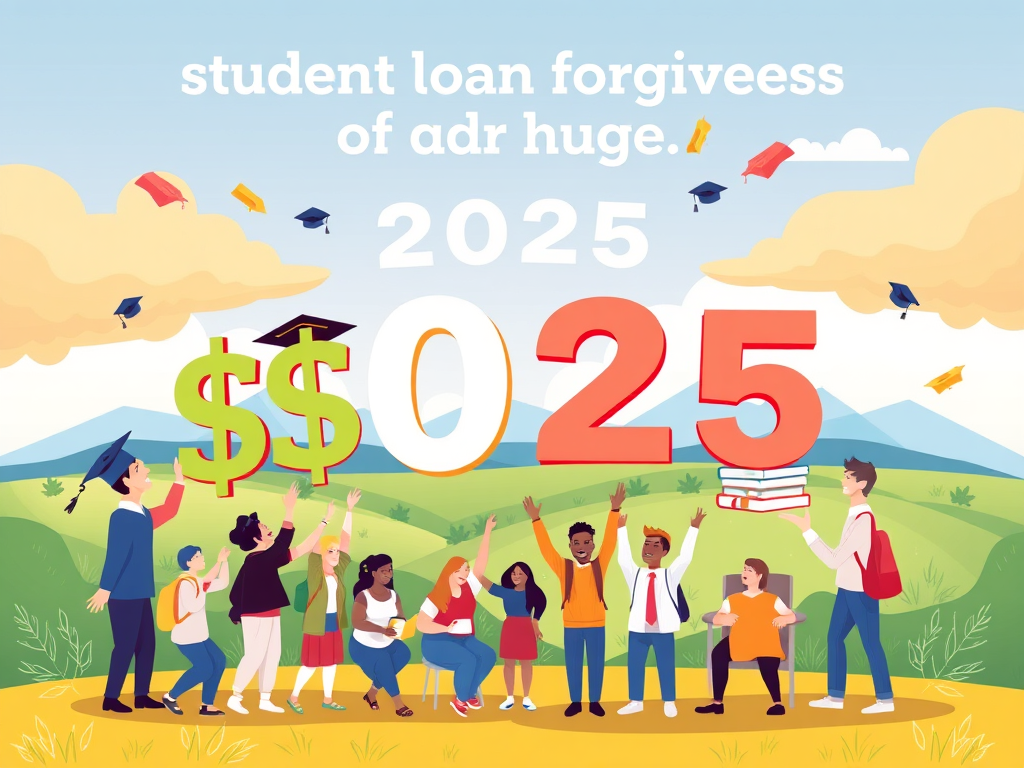Published on Portal do Capital | Education Finance Guide | 15 min read
Student loan debt has reached unprecedented levels, with millions of Americans carrying educational debt that impacts their financial future. Fortunately, various federal and state programs offer pathways to student loan forgiveness, potentially eliminating thousands or even tens of thousands of dollars in debt.
Understanding which programs you qualify for and how to navigate the application process can be the difference between decades of payments and achieving financial freedom. This guide provides comprehensive information about every major student loan forgiveness program available in 2025, including recent policy changes and updated eligibility requirements.
Federal Student Loan Forgiveness Programs
The federal government offers several loan forgiveness programs designed to help borrowers in specific professions or circumstances. These programs typically require meeting strict eligibility criteria and completing specific requirements over several years.
The Public Service Loan Forgiveness program is one of the most comprehensive forgiveness options available, designed to encourage careers in public service by forgiving remaining loan balances after 10 years of qualifying payments.
✅ Eligibility Requirements
- Work full-time for a qualifying public service employer (government, 501(c)(3) non-profit, or other qualifying non-profit)
- Have Direct Loans (other federal loans must be consolidated into Direct Loans)
- Be enrolled in an income-driven repayment (IDR) plan
- Make 120 qualifying monthly payments (10 years)
- Payments must be made on time and for the full amount due
Eligible borrowers can have their remaining loan balance forgiven tax-free after making 120 qualifying loan payments on an IDR plan and 10 years of full-time public service work. This program offers complete forgiveness of remaining balances, regardless of the amount.
⚠️ Important PSLF Considerations
Recent executive orders have proposed changes to PSLF, but the program remains active. However, it’s crucial to submit annual Employment Certification Forms and stay informed about any policy modifications that might affect your eligibility.
If you teach full-time for five complete and consecutive academic years in a low-income elementary school, secondary school, or educational service agency, you may be eligible for forgiveness of up to $17,500 on your Direct Loan or FFEL Program loans.
✅ Eligibility Requirements
- Teach full-time for five complete and consecutive academic years
- Teach in a low-income elementary or secondary school, or educational service agency
- Have Direct Loans or FFEL Program loans
- Meet highly qualified teacher requirements in your state
- For $17,500 forgiveness: Teach mathematics, science, or special education
- For $5,000 forgiveness: Teach any other subject in qualifying school
Teachers should note that you must not have an outstanding balance on Direct Loans or with a Federal Family Education Loan Program from before your five-year teaching period to qualify for this program.
Several programs target healthcare professionals who commit to serving in underserved areas, offering substantial loan repayment assistance in exchange for service commitments.
✅ National Health Service Corps (NHSC)
- Provide primary care in Health Professional Shortage Areas
- Minimum 2-year service commitment
- Up to $50,000 loan repayment for initial 2-year commitment
- Additional funding available for extended service
✅ Indian Health Service Loan Repayment
- Serve American Indian and Alaska Native communities
- 2-year minimum service commitment
- Up to $40,000 loan repayment for initial commitment
- Priority given to certain health professions
Legal professionals have access to specialized forgiveness programs, particularly those serving in public interest law or underserved communities.
✅ Department of Justice Attorney Student Loan Repayment
- Work as an attorney for the Department of Justice
- Minimum service commitment requirements
- Up to $60,000 in loan repayment assistance
- Annual award amounts vary
✅ State-Specific Legal Aid Programs
- Vary by state and organization
- Typically require public interest law service
- Award amounts range from $5,000 to $15,000 annually
- May require bar admission in specific states
Income-Driven Repayment Forgiveness
Under an income-driven repayment (IDR) plan, you may be eligible to have any remaining balance on your student loans automatically canceled or forgiven after 20 to 25 years, and for some borrowers, loans will be canceled in as little as 10 years!
The federal government offers several income-driven repayment (IDR) plans, which typically allow you to cap your loan payments at a percentage of your monthly discretionary income. After completing the required payment period, any remaining balance is forgiven.
| IDR Plan | Payment Calculation | Forgiveness Timeline | Key Features |
|---|---|---|---|
| Income-Based Repayment (IBR) | 10-15% of discretionary income | 20-25 years | Partial financial hardship required |
| Pay As You Earn (PAYE) | 10% of discretionary income | 20 years | Must be new borrower after 2007 |
| Revised Pay As You Earn (REPAYE) | 10% of discretionary income | 20-25 years | No income requirement |
| Income-Contingent Repayment (ICR) | 20% of discretionary income or 12-year fixed | 25 years | Available for all Direct Loan borrowers |
⚠️ 2025 IDR Plan Changes
Though, it would require a minimum monthly payment of $10, ending the $0 payment option of previous income-driven plans. This change may affect borrowers who previously qualified for $0 payments under certain IDR plans.
Military Service Forgiveness Programs
Active duty military personnel and veterans have access to several specialized loan forgiveness and repayment programs designed to recognize their service to the country.
✅ Army Student Loan Repayment Program
- Active duty Army personnel
- Up to $65,000 loan repayment
- Specific Military Occupational Specialties (MOS)
- Service commitment required
✅ Navy Loan Repayment Program
- Active duty Navy personnel
- Up to $65,000 loan repayment
- Critical skill ratings priority
- Annual payment limits apply
✅ Air Force College Loan Repayment Program
- Active duty Air Force personnel
- Up to $10,000 annually
- Specific career fields eligible
- Service commitment requirements
State-Specific Forgiveness Programs
Many states offer their own loan forgiveness programs to attract professionals to high-need areas or specific professions. These programs often complement federal programs and can provide additional relief.
✅ Common State Program Types
- Healthcare: Rural and underserved area service requirements
- Teaching: High-need schools and subject areas
- Legal: Public interest and legal aid services
- STEM: Science, technology, engineering, and math fields
- Social Work: Child welfare and mental health services
State programs typically require 2-5 years of service commitment and offer awards ranging from $5,000 to $25,000 annually. Research your state’s specific offerings through your state’s higher education agency or professional licensing boards.
Discharge Programs for Special Circumstances
Federal law provides for loan discharge in specific circumstances where borrowers cannot reasonably be expected to repay their loans due to circumstances beyond their control.
You’ll need to submit an application to the Department of Education, along with your proof of disability. Once approved, your federal student loans may be discharged in full. There is typically a three-year monitoring period to ensure you remain eligible.
✅ Eligibility Requirements
- Veterans with 100% permanent disability rating
- Social Security Disability Insurance (SSDI) recipients
- Physician certification of total and permanent disability
- Three-year post-discharge monitoring period
✅ Eligibility Requirements
- School closes while you’re enrolled
- School closes within 180 days of withdrawal
- Unable to complete program due to closure
- Did not complete program through teach-out or transfer
✅ Eligibility Requirements
- School violated state law related to your loans or education
- School misled you or engaged in deceptive practices
- School violated federal law related to your loans or education
- Must provide evidence supporting your claim
How to Apply for Student Loan Forgiveness
Step-by-Step Application Process
Determine Your Loan Types
Log into your Federal Student Aid account at studentaid.gov to identify all your federal loans. Note the loan types, servicers, and current balances. Some forgiveness programs only apply to specific loan types.
Research Eligible Programs
Based on your profession, employer, and circumstances, identify which forgiveness programs you may qualify for. Consider both federal and state-specific programs that match your situation.
Consolidate Loans if Necessary
Some programs require Direct Loans. If you have FFEL or Perkins loans, you may need to consolidate them into a Direct Consolidation Loan to qualify for certain forgiveness programs.
Enroll in Required Repayment Plan
Many forgiveness programs require enrollment in specific repayment plans, typically income-driven repayment plans. Contact your loan servicer to switch plans if necessary.
Submit Required Documentation
Complete and submit all required forms for your chosen program. For PSLF, submit annual Employment Certification Forms. For other programs, provide proof of employment, service, or qualifying circumstances.
Maintain Compliance
Continue making required payments on time and maintain eligibility requirements. Keep detailed records of all payments and correspondence with loan servicers.
Apply for Forgiveness
Once you’ve met all requirements, submit your forgiveness application. Processing times vary by program, so submit applications as soon as you’re eligible.
⏰ Important Deadlines for 2025
Some forgiveness programs have application deadlines or limited funding. Research specific deadlines for your target programs and submit applications early to avoid missing opportunities.
Maximizing Your Forgiveness Benefits
Strategic planning can help you maximize the benefits of loan forgiveness programs and potentially qualify for multiple programs simultaneously.
Combining Programs
In some cases, you can benefit from multiple programs. For example, teachers might use Teacher Loan Forgiveness for partial relief, then pursue PSLF for remaining balances. However, you cannot receive forgiveness for the same payments under multiple programs.
Tax Implications
Most federal forgiveness programs provide tax-free forgiveness, but some circumstances may create tax liability. Income-driven repayment forgiveness typically results in taxable income for the forgiven amount, though recent legislation has provided temporary relief from this tax burden.
Employer Assistance Programs
Many employers offer student loan repayment assistance as an employee benefit. These programs can complement federal forgiveness programs and accelerate your debt elimination timeline.

